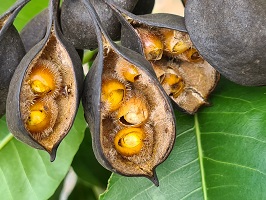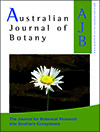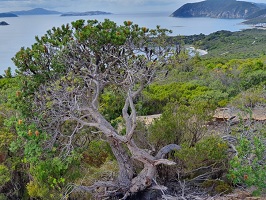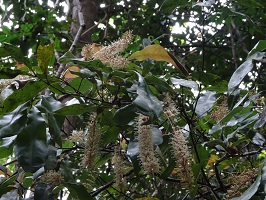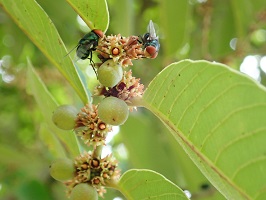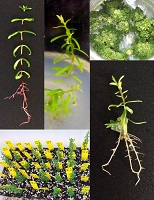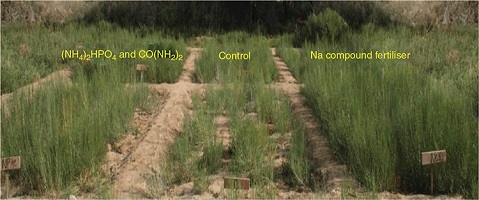Australian Journal of Botany
Volume 69
Number 5 2021
The Ormeau bottle tree Brachychiton ‘sp. Ormeau’ is Critically Endangered and located in a peri-urban environment where there is strong community interest in its conservation. We found it is a genetically distinct species with low genetic diversity but is not inbred. Recovery programs should be aimed at protecting its habitat enabling natural regeneration and enhancement planting can be sourced from isolated roadside trees.
Landscape-level processes such as fire regimes and increasing disease prevalence, both influenced by a drying climate, are emerging threats affecting plant groups such as the Proteaceae that have a centre of endemism on the south coast of Western Australia. We investigated population-level impacts of contemporary fire regimes and canker diseases on the south coast endemic and threatened shrub Banksia verticillata. We found extinction risk was strongly influenced by fire frequency and extent, as well as the prevalence of canker disease. Higher impact canker disease scenarios resulted in rapid population declines and potential extinction.
The endangered Macadamia jansenii is known only from one small national park. Recently, new plants have been discovered, increasing the known population size; however, many plants were affected by bushfire in 2019. The recovery of this species was assessed pre- and post-fire using habitat modelling, population viability modelling and genetic diversity assessments.
We investigated floral phenology, alternation of sexual phases and pollination of Bridelia species. Variations in dichogamy patterns were identified: one-cycle dichogamy, duodichogamy, multi-cycle dichogamy and pure staminates. This study suggests the possibility of a floral mimicry system associated with blowflies in B. retusa.
This study developed micropropagation methods for Leptospermum species that are in high demand for therapeutic-honey production. A simple hormone-free node-culture method was effective for both L. polygalifolium and L. scoparium, providing ~600 shoots from a single seed in 32 weeks. A medium that contained benzyladenine was effective for callogenesis and shoot proliferation of L. polygalifolium but not L. scoparium. These micropropagation methods will facilitate rapid establishment of high-value Leptospermum honey plantations.
Succulent xerophytes (SX) accumulate Na+ to resist to drought stress, and using a Na-compound fertiliser (NaCF) at small scales could increase drought resistance of these plants. Whether NaCF can be widely applied in desert areas is unclear. This study revealed that NaCF significantly promotes growth and enhances drought resistance of SX in the nursery and in desert afforestation, and could be widely applied during eco-restoration of desert regions of China.
